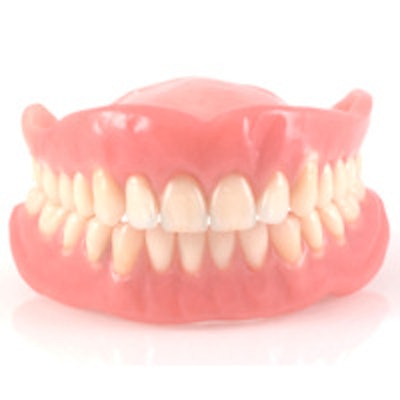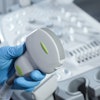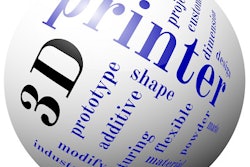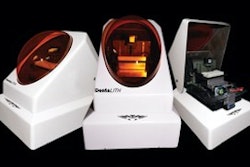
3D-printed teeth made with antimicrobial composite resins can kill caries-causing bacteria on contact, according to a new study by researchers from the Netherlands. The antibacterial teeth killed almost all Streptococcus mutans while showing no signs of being harmful to human cells.
 Yijin Ren, DDS, PhD, chair, Department of Orthodontics, University Medical Center Groningen. All images courtesy of the University of Groningen.
Yijin Ren, DDS, PhD, chair, Department of Orthodontics, University Medical Center Groningen. All images courtesy of the University of Groningen.In this study, researchers embedded antimicrobial quaternary ammonium salts inside existing dental resin polymers to make intraoral appliances and dental restorations. Once the mix was put into a 3D printer, it was hardened with ultraviolet light and used to print 3D replacement teeth. The positively charged salts kill the negatively charged bacteria, the researchers found.
Using antimicrobial resins rather than surface coating existing materials was preferable because of the additional time and cost involved in surface coating, according to researchers from the University of Groningen in the Netherlands.
"The antimicrobial properties were shown to be caused by bacterial contact killing with the material rather than the release of antimicrobial compounds from the resin," wrote researchers Yijin Ren, DDS, PhD; Andreas Herrmann, PhD; and colleagues (Advanced Functional Materials, October 9, 2015). Dr. Ren is the chair and program director of the orthodontics department at the University of Groningen and University Medical Center Groningen. Hermann is a professor at the Zernike Institute for Advanced Materials at the University of Groningen.
Importance of antimicrobial ability
Device-related infections are the leading cause of implanted-device failure, making the importance of engineering an intrinsic antimicrobial functionality into implantable medical devices obvious, according to the study authors.
 Andreas Herrmann, PhD, professor, Zernike Institute for Advanced Materials, University of Groningen.
Andreas Herrmann, PhD, professor, Zernike Institute for Advanced Materials, University of Groningen.As many as 15% of oral biofilm-related post-treatment complications in orthodontic patients require professional care with annual costs of more than $500 million in the U.S. (Clinical Oral Investigations, September 2014, Vol. 18:7, pp. 1711- 1718). U.S. dental patients spend about $20 billion annually to replace failed resin composite restorations that were damaged by bacterial infiltration and resulting secondary caries underneath restorations, the authors of the current study noted.
To test the 3D-printed teeth in the study, the researchers coated them with human saliva and exposed them to S. mutans, which leads to the formation of dental plaque and caries. The antibacterial teeth killed more than 99% of all bacteria and showed no signs of being harmful to human cells. A sample of untreated resin resulted in 99% of the bacteria remaining.
"Our innovative materials kill oral bacteria by contact. Oral cariogenic and other pathogenic bacteria are the cause of a number of oral diseases," the researchers told DrBicuspid.com. "Though proper maintenance of oral hygiene remains the most important measures to prevent oral biofilm related diseases, it relies largely on patient compliance. Bacteria killing by contact is a great complementary feature to assist our patients to reach optimal oral health."
Ready for the next step
By optimizing the activity and stability of these materials, a prototype was now ready for the next step in clinical testing, the authors reported. They noted the technology has the potential for many dental applications.
"The antimicrobial resins prepared can find application in dentistry as an adhesive, luting cement, or composite either to restore cavities or fix orthodontic brackets on teeth," they wrote. "Complex geometries of oral appliances such as antimicrobial crowns or splints were successfully realized and the 3D-printed objects exhibited mechanical properties that were almost identical to conventionally photocured polymer samples."
3D-printable antimicrobial polymers can easily be transferred to other nonmedical application areas, such as food packaging, water purification, or even toys for children, the researchers noted.
"Our materials are amendable for a number of dental/medical applications and 3D-printable for dental/medical devices," the researchers told DrBicuspid.com.
Extensive preclinical tests are ongoing, and clinical trials are planned.



















